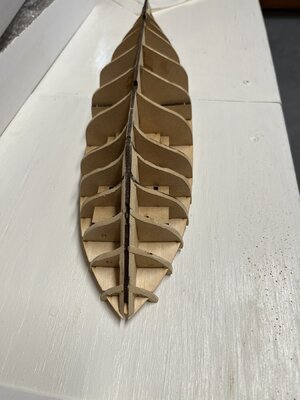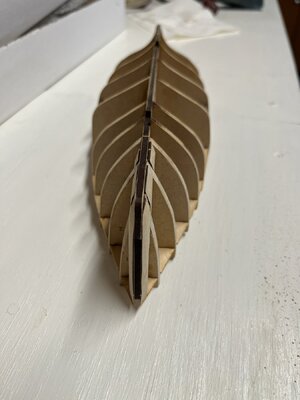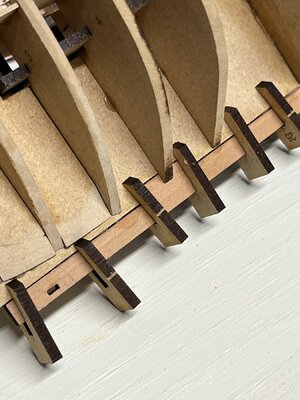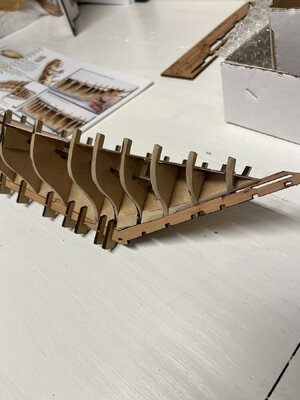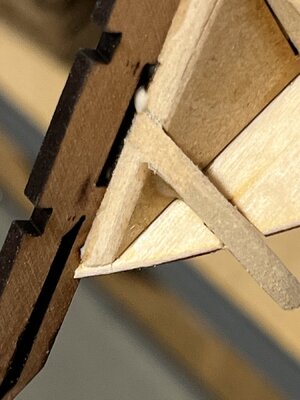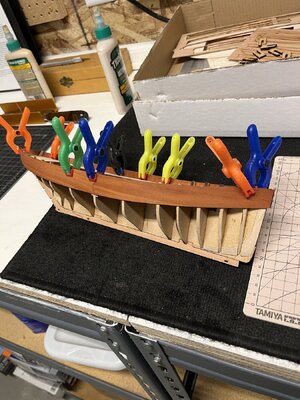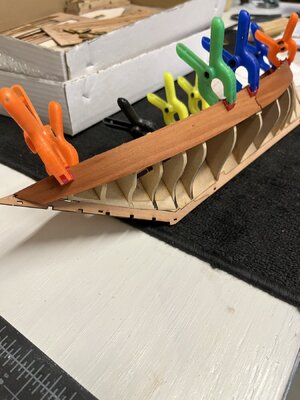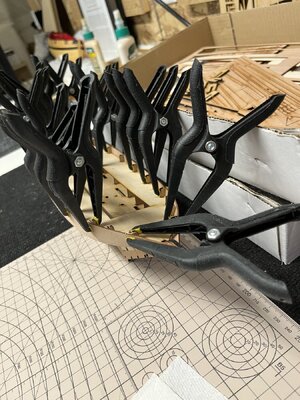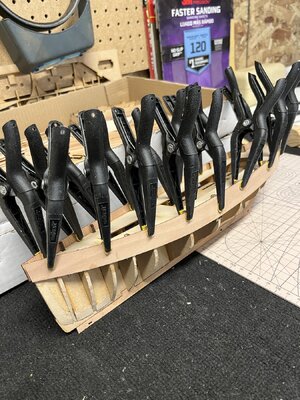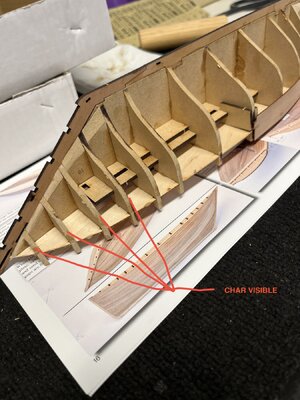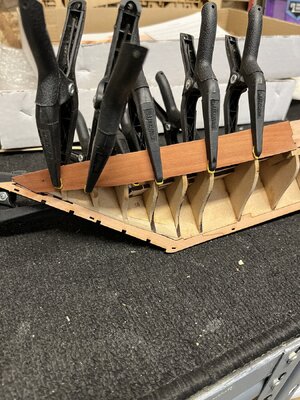I've built several Scottish fishing vessels and decided to build the last of the sailing fishing vessels. I find these to make wonderful displays with the construction and sails so picking the most unique design for interest. Working on difficult models these sailing vessels are a great respite from the more tedious.
Enclosed is a description of a ZULU from the Vanguard instructions.
The Zulu was an innovative hybrid which fused the extreme rake of the sternpost of the ‘Scaffie’ and the near straight stem of the ‘Fifie’. This produced a unique and highly successful class of fore and aft rigged fishing vessels during the last decades of the herring sail fishery.
Tillers gave way to the steering wheel, operated via a worm screw gear system. The sail area was large for the size of vessel, and the Zulu’s could reach 10 knots with little problem, and it is of this pinnacle of Zulu development that the Lady Isabella is based upon.
Interestingly, the Zulu had no standing rigging on its fore and aft masts, instead relying on support entirely upon their sail halyards and a burton stay tackle, set up to windward. This did mean that any failure would have been catastrophic.
The name Zulu was derived because the boat was first made during the British Zulu wars and I can't find why someone would pick calling the unique design a Zulu. At its height there were thousands of sailing drifters in north eastern Scotland and because of the Zulu's speed many were used until the advent of steam drifters. Today there are no remaining Zulu beyond wrecked decaying keels.
This the only photo I took after starting dry fitting the ribs and backbone. Notice the laser char and the internal structures are a very dense MDF. On the forward (blunt) and aft end laser lines giving the location of how much to fair. The balance of the kit is quality hardwood of pear and walnut dowels.
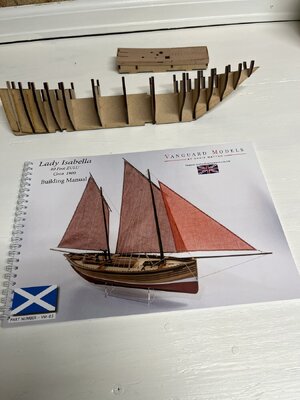
Today I built the frame structure with reinforced ends. This kit is of amazing quality as shown when you slot the frames into the backbone and lower deck slotted into the frames the fit is so snug there is no movement. In the above photo I mentioned the laser lines to ease the fairing limits and using the disc sander I faired the forward and aft reinforcements and glued them in place along with the frames.
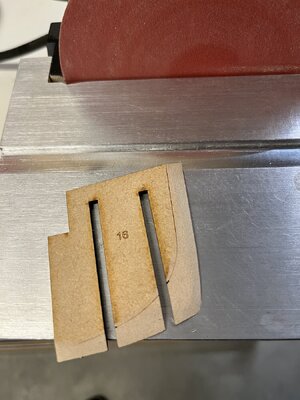
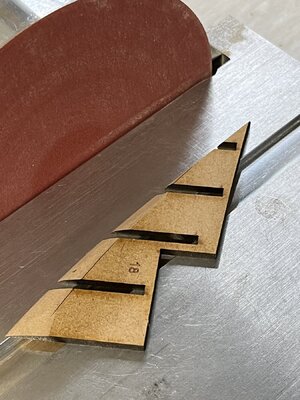
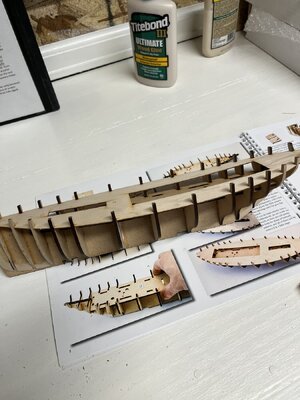
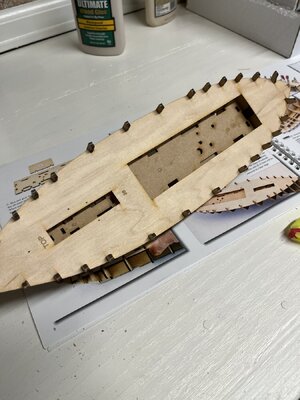
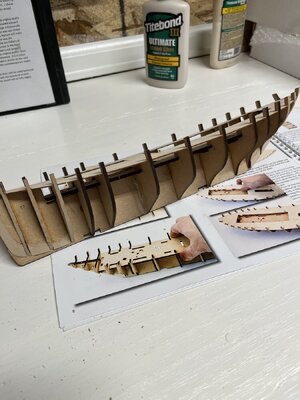
Another nice thing about Vanguard is how they mark each piece it really helps in assembly. Now that it's all together I've set it aside to allow the glue to set overnight as the next step is fair the frames.
Enclosed is a description of a ZULU from the Vanguard instructions.
The Zulu was an innovative hybrid which fused the extreme rake of the sternpost of the ‘Scaffie’ and the near straight stem of the ‘Fifie’. This produced a unique and highly successful class of fore and aft rigged fishing vessels during the last decades of the herring sail fishery.
Tillers gave way to the steering wheel, operated via a worm screw gear system. The sail area was large for the size of vessel, and the Zulu’s could reach 10 knots with little problem, and it is of this pinnacle of Zulu development that the Lady Isabella is based upon.
Interestingly, the Zulu had no standing rigging on its fore and aft masts, instead relying on support entirely upon their sail halyards and a burton stay tackle, set up to windward. This did mean that any failure would have been catastrophic.
The name Zulu was derived because the boat was first made during the British Zulu wars and I can't find why someone would pick calling the unique design a Zulu. At its height there were thousands of sailing drifters in north eastern Scotland and because of the Zulu's speed many were used until the advent of steam drifters. Today there are no remaining Zulu beyond wrecked decaying keels.
This the only photo I took after starting dry fitting the ribs and backbone. Notice the laser char and the internal structures are a very dense MDF. On the forward (blunt) and aft end laser lines giving the location of how much to fair. The balance of the kit is quality hardwood of pear and walnut dowels.

Today I built the frame structure with reinforced ends. This kit is of amazing quality as shown when you slot the frames into the backbone and lower deck slotted into the frames the fit is so snug there is no movement. In the above photo I mentioned the laser lines to ease the fairing limits and using the disc sander I faired the forward and aft reinforcements and glued them in place along with the frames.





Another nice thing about Vanguard is how they mark each piece it really helps in assembly. Now that it's all together I've set it aside to allow the glue to set overnight as the next step is fair the frames.




